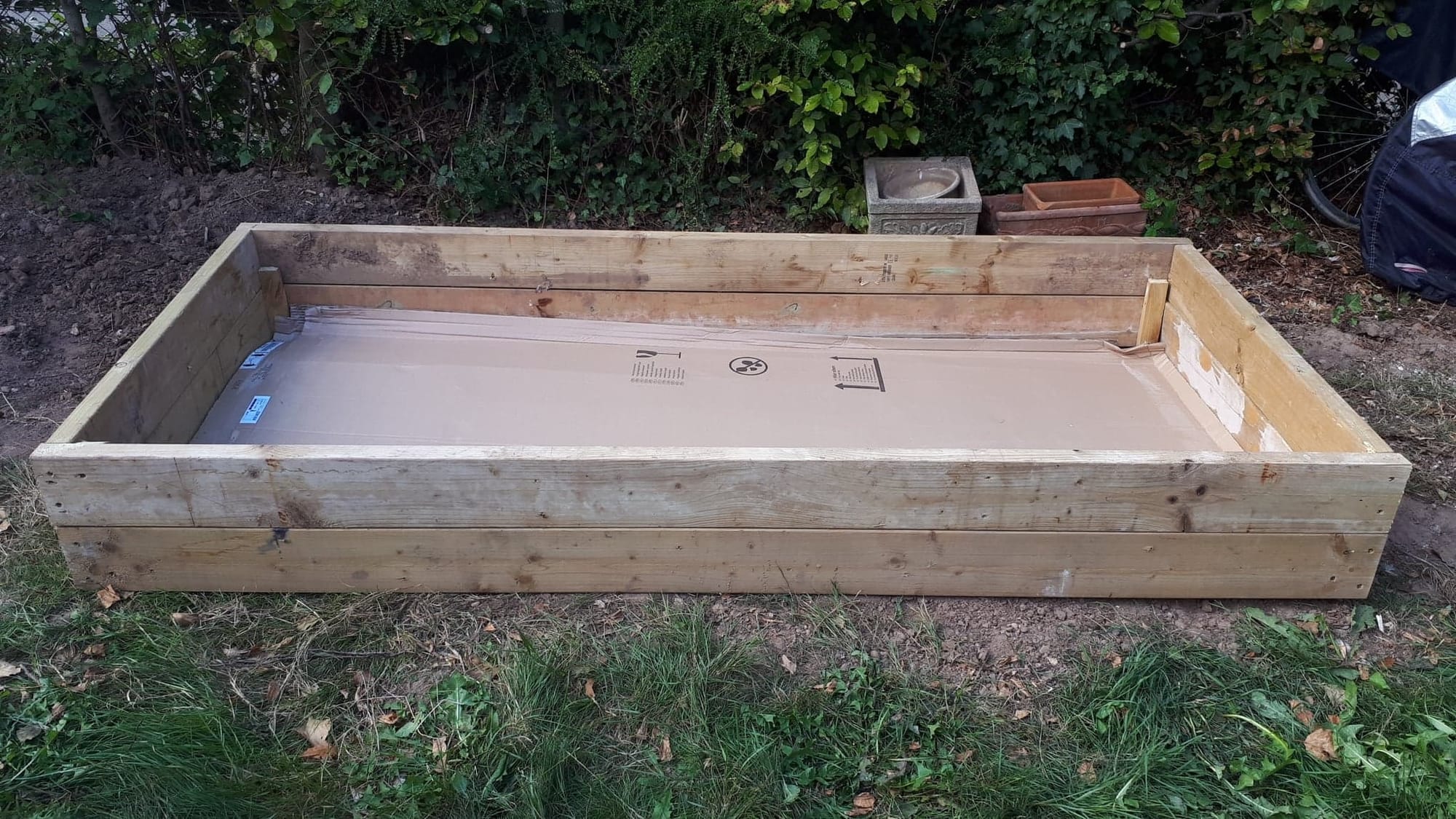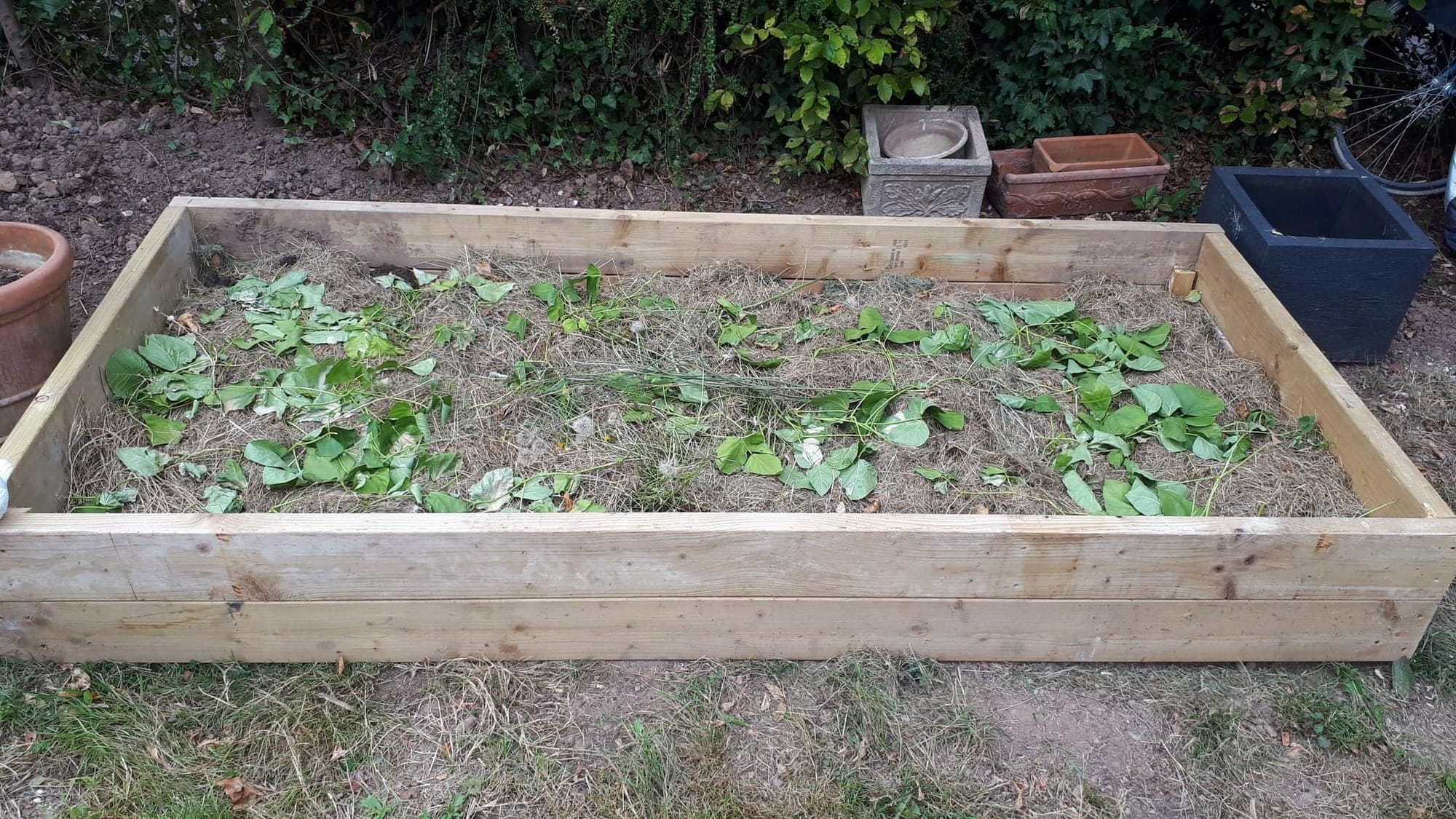Winter Preparation
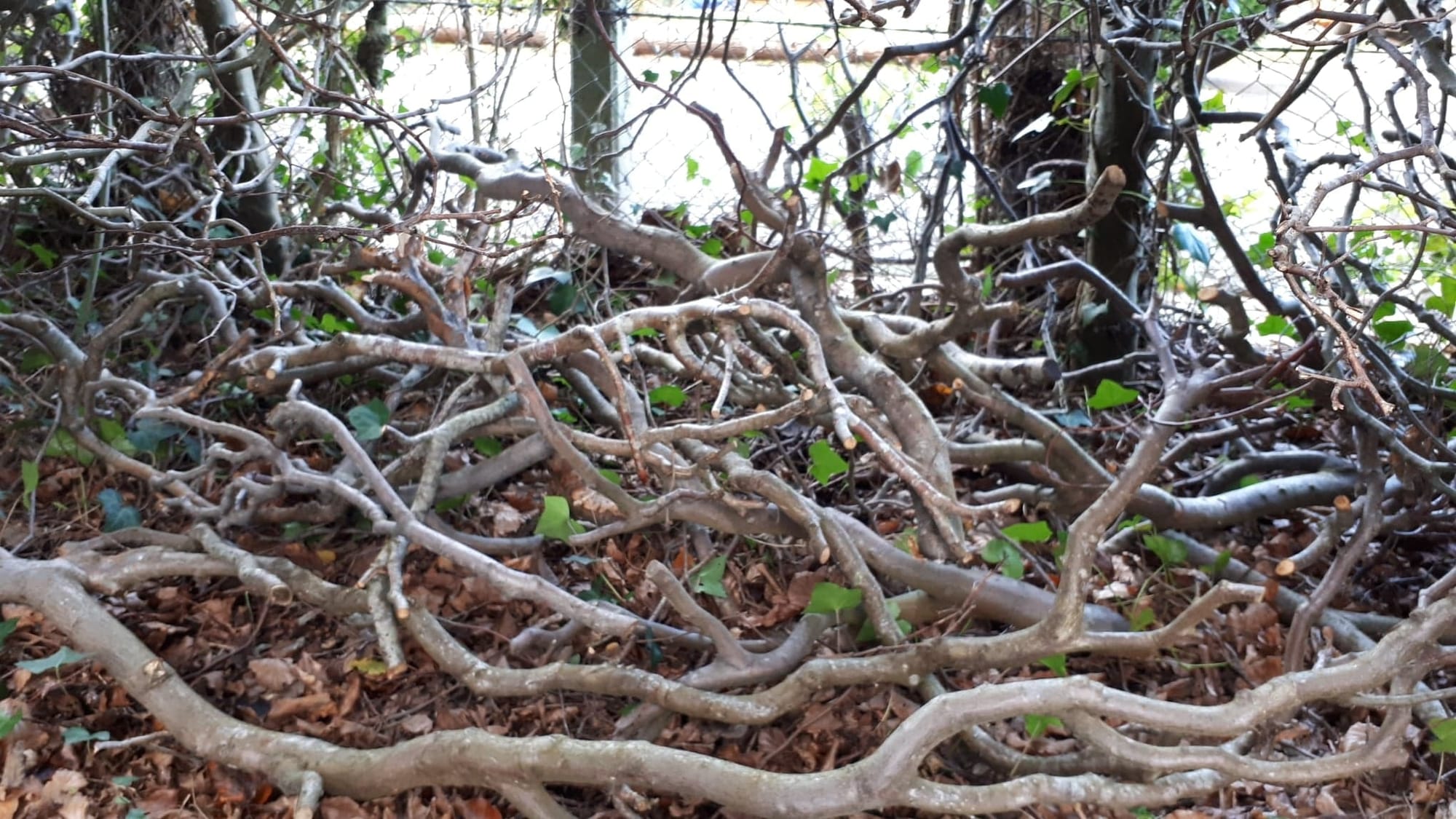
After deciding on a general plan of action, work started in earnest......
logs leftover from pruning the Beech hedge were piled up and placed under the hedge at the bottom of the garden. The invertebrates and the decomposers (centipedes, woodlice, beetles, worms, slugs) will quickly move in to do their work. This provides a valuable food source for hedgehogs, frogs and slow worms amongst others. It will also be a good place to nest and make a home (hedgehogs, slow worms, frogs, wren). As more trees are pruned this pile can be added to so the log pile will remain a good habitat.
The pile of stones were left in situ for a hibernaculum,
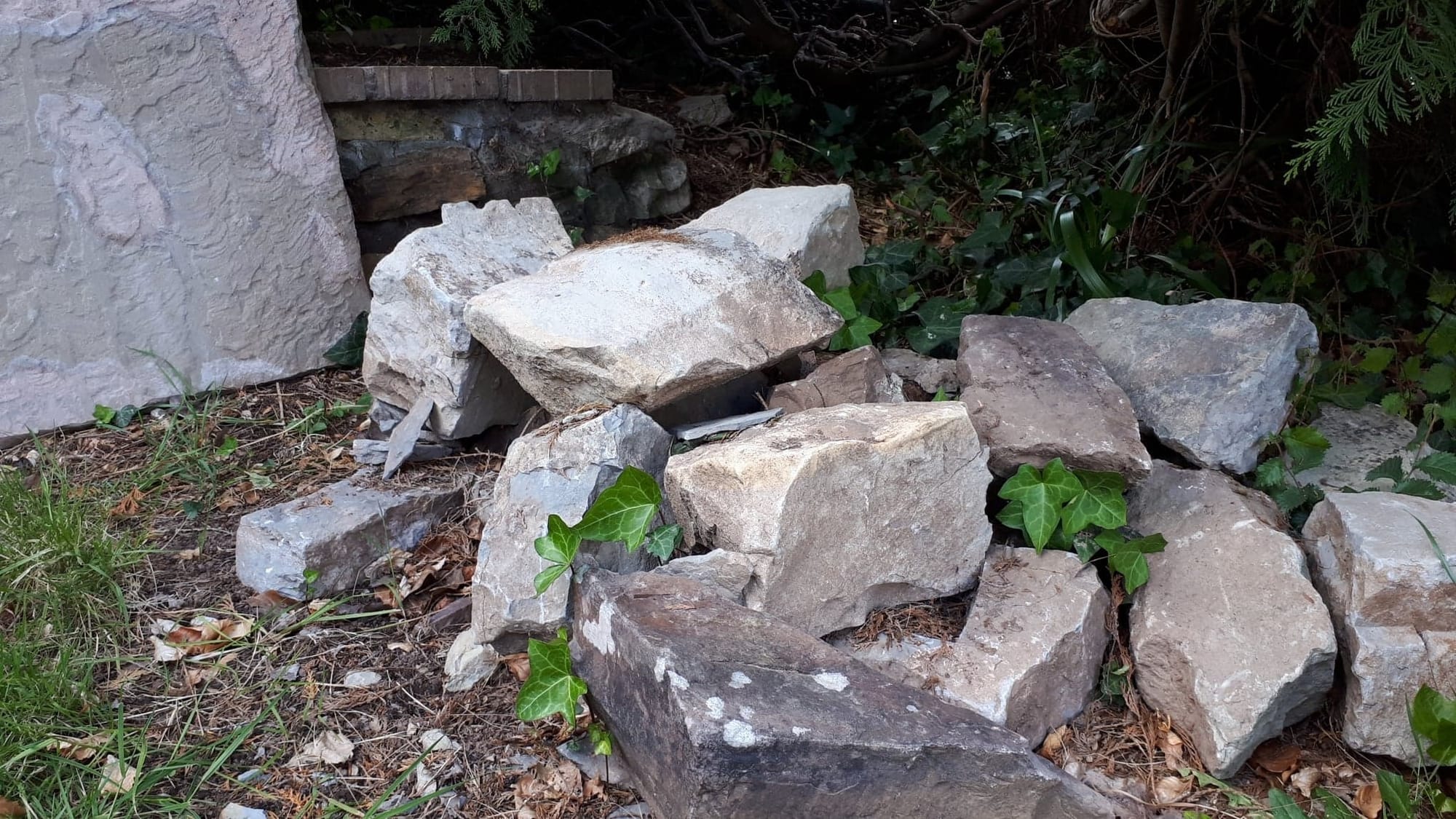
i.e. somewhere to hibernate for reptiles and amphibians. Equally it will be sunny, sheltered spot to bask on the warm stones in the spring and summer for butterflies and reptiles alike. It could become a rockery.
The narrow end of the garden has been cleared and levelled. Waiting for wildflowers for bees and pollinators as well as a beehive
.
The mound has been shaped and planted with bee and pollinator friendly plants and a wildlife pond has been put in. Using an old hot water tank (anything can be used for a pond) but with stones inside to ensure that wildlife, like hedgehogs (if they fall in) and frogs can climb out. Also birds, bees and butterflies will use it to drink from so there is a perch for them. Very quickly aquatic life will colonise.
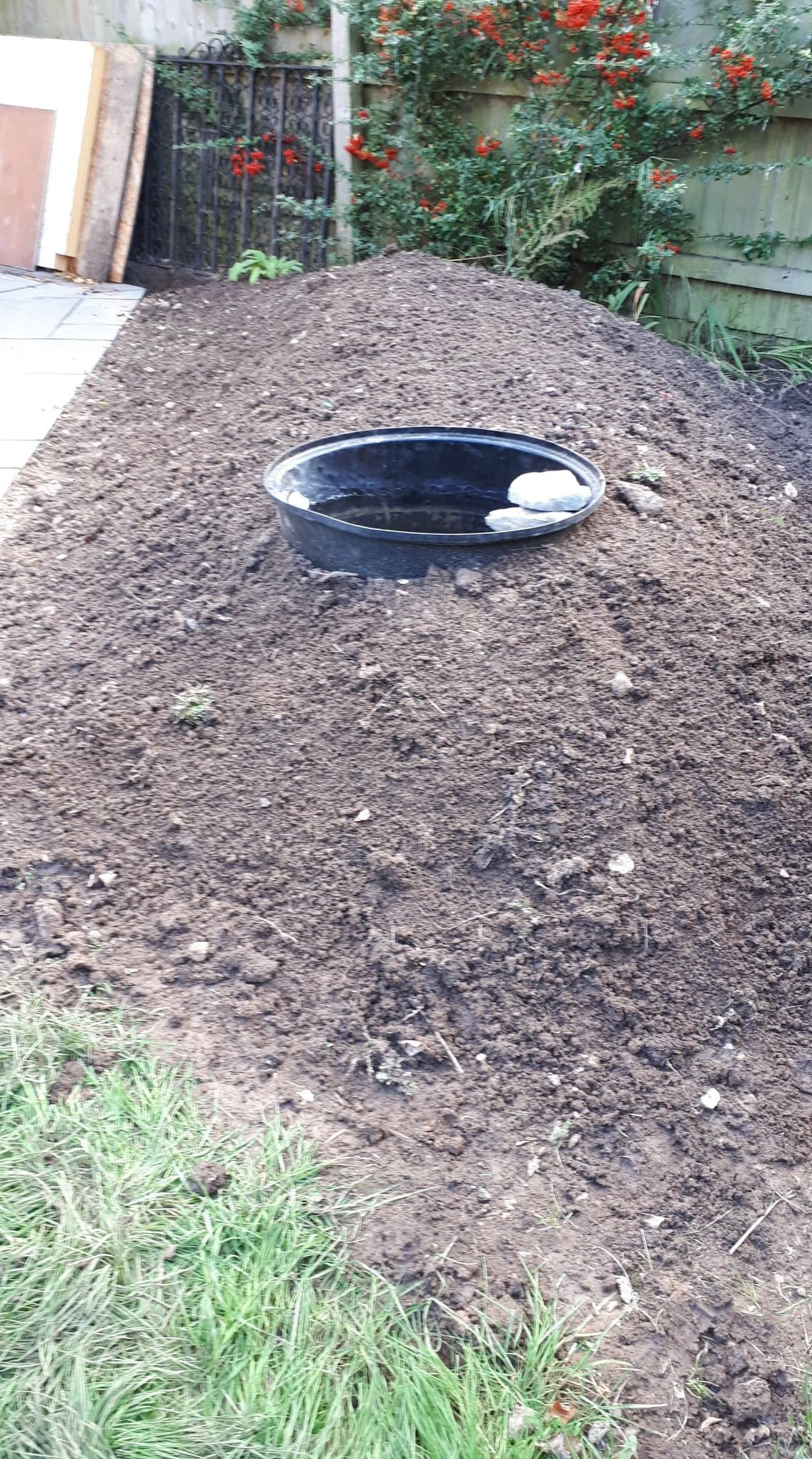
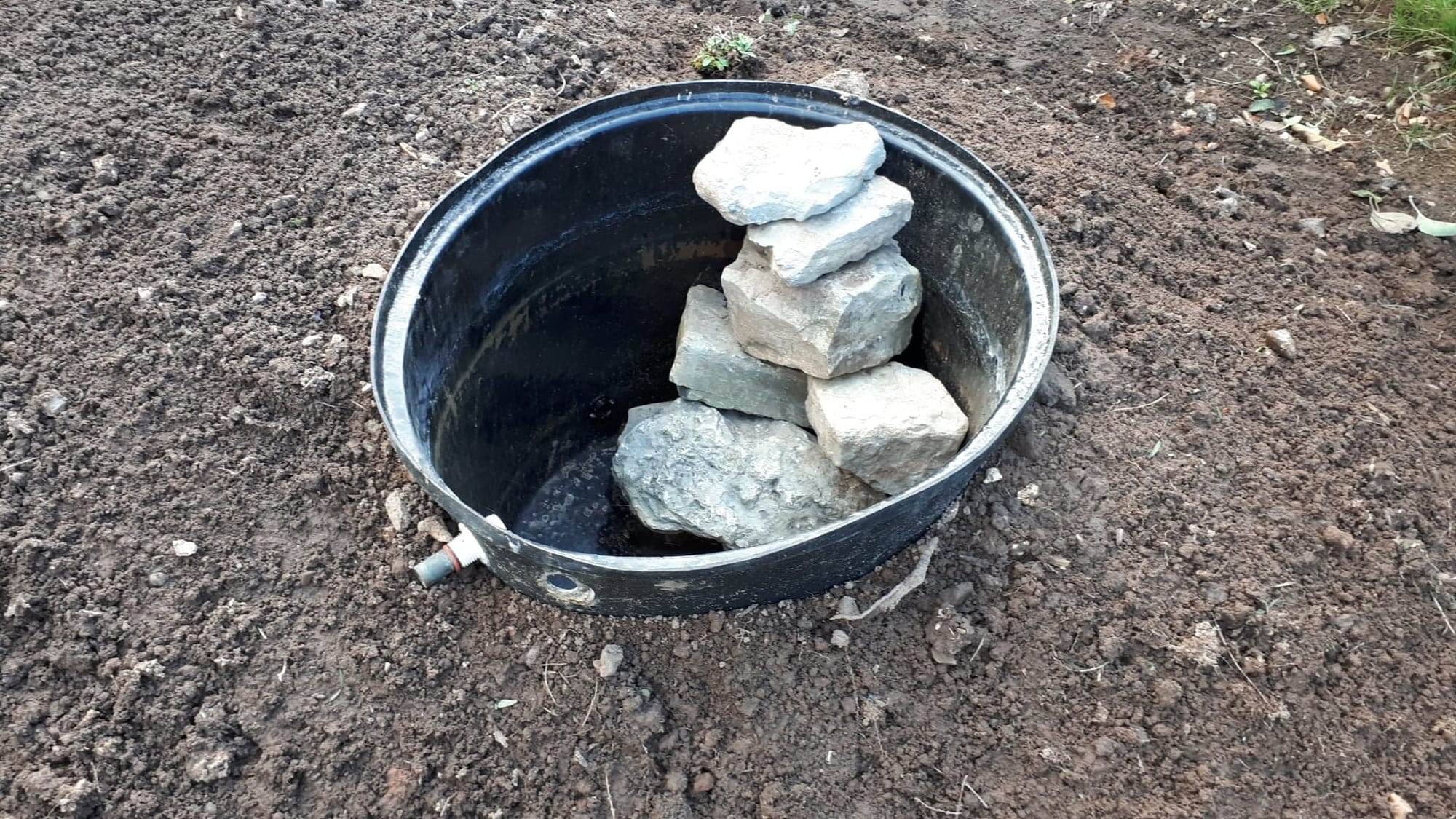
No dig beds were constructed ready for veggies.
Very simple: lay down card to cut out the light, cover with debris, e.g. sticks grass clippings, leaves, to add to the organic layer. Then add topsoil if you have it or straight to the compost and you're ready to sow your seeds.
